Mesocorticolimbic glutamatergic pathway
- PMID: 21653852
- PMCID: PMC6623324
- DOI: 10.1523/JNEUROSCI.1598-11.2011
Mesocorticolimbic glutamatergic pathway
Abstract
The mesocorticolimbic dopamine (DA) system plays important roles in reward, motivation, learning, memory, and movement. This system arises from the A10 region, comprising the ventral tegmental area and three adjacent midline nuclei (caudal linear nucleus, interfascicular nucleus, and rostral linear nucleus of the raphe). DAergic and GABAergic neurons are intermingled in this region with recently discovered glutamatergic neurons expressing the vesicular glutamate transporter 2 (VGluT2). Here, we show by in situ hybridization and immunohistochemistry that there are two subpopulations of neurons expressing VGluT2 mRNA in the A10 region: (1) a major subpopulation that expresses VGluT2 but lacks tyrosine hydroxylase (TH; VGluT2-only neurons), present in each nucleus of the A10 region, and (2) a smaller subpopulation that coexpresses VGluT2 and TH (VGluT2-TH neurons). By quantitative real-time PCR, we determined the mRNA copy numbers encoding VGluT2 or TH in samples of individual microdissected TH immunoreactive (IR) neurons. Data from both in situ hybridization and from mRNA quantification showed that VGluT2 mRNA is not present in every TH-IR neuron, but restricted to a subset of TH-IR neurons located in the medial portion of the A10 region. By integration of tract tracing, in situ hybridization, and immunohistochemistry, we found that VGluT2-only neurons and VGluT2-TH neurons each innervate both the prefrontal cortex and the nucleus accumbens. These findings establish that in addition to the well-recognized mesocorticolimbic DA-only and GABA-only pathways, there exist parallel mesocorticolimbic glutamate-only and glutamate-DA pathways.
Figures


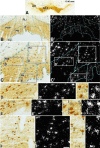
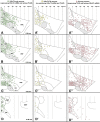

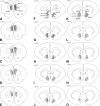

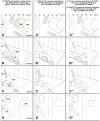

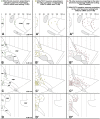
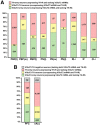
References
-
- Arluison M, Dietl M, Thibault J. Ultrastructural morphology of dopaminergic nerve terminals and synapses in the striatum of the rat using tyrosine hydroxylase immunocytochemistry: a topographical study. Brain Res Bull. 1984;13:269–285. - PubMed
-
- Bérube-Carriére N, Riad M, Dal Bo G, Levesque D, Trudeau LE, Descarries L. The dual dopamine-glutamate phenotype of growing mesencephalic neurons regresses in mature rat brain. J Comp Neurol. 2009;517:873–891. - PubMed
-
- Bourque MJ, Trudeau LE. GDNF enhances the synaptic efficacy of dopaminergic neurons in culture. Eur J Neurosci. 2000;12:3172–3180. - PubMed
-
- Bouyer JJ, Joh TH, Pickel VM. Ultrastructural localization of tyrosine hydroxylase in rat nucleus accumbens. J Comp Neurol. 1984;227:92–103. - PubMed
Publication types
MeSH terms
Substances
Grants and funding
LinkOut - more resources
Full Text Sources
Other Literature Sources
